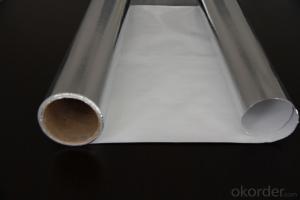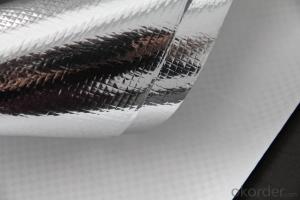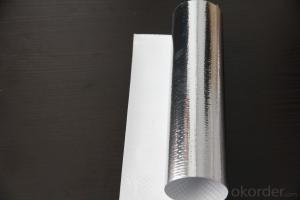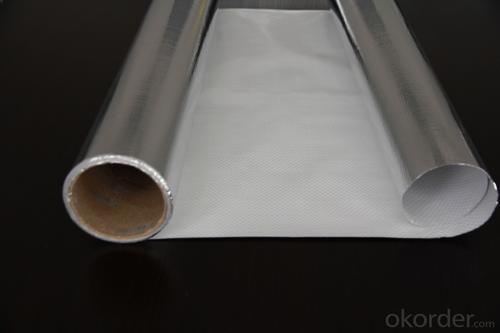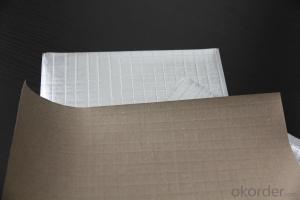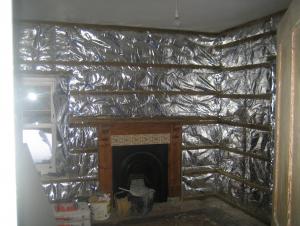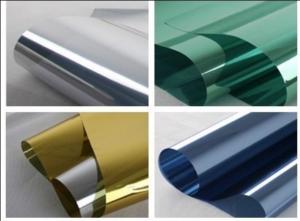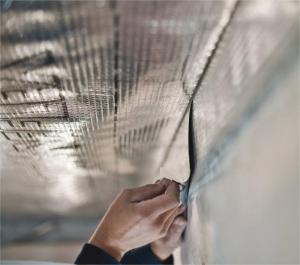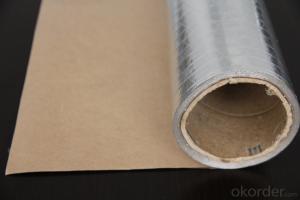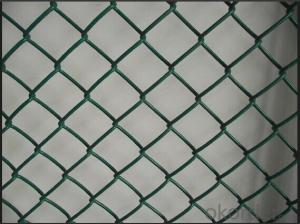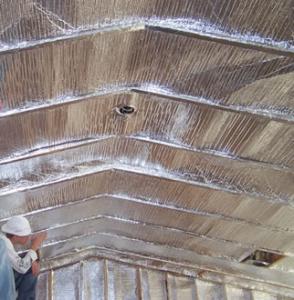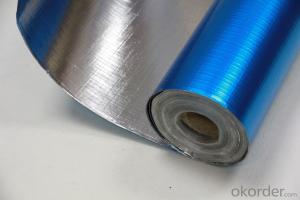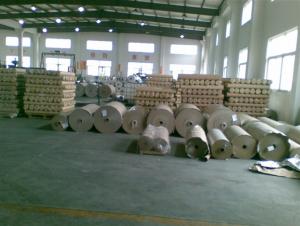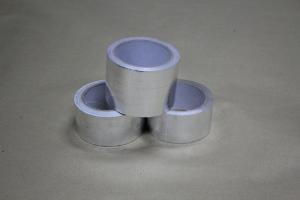Aluminum Foil Facing Single Sided Woven Foil
- Loading Port:
- China Main Port
- Payment Terms:
- TT or LC
- Min Order Qty:
- 5000 m²
- Supply Capability:
- 800000 m²/month
OKorder Service Pledge
OKorder Financial Service
You Might Also Like
Introduction of Aluminum Foil Facing
Aluminum Foil Facing is a kind of film, which is made of by Aluminum: 7u / Polyethylene / Polyethylene Woven Fabricfor Roofing Insulation, Wall Insulation and Sarking Insulation
Application of Aluminum Foil Facing
Our aluminum foil facing are mainly used as facing for glass wool insulation, rockwool, mineral wool etc. Also aluminum foil facing is used under roof decking, under attic rafters, over existing attic thermal insulation, in floors, walls and crawl spaces, and in industrial and commercial buildings to block radiant heat coming into house through the roof during the summer and retain indoor heat generated during in winter
Advantage of Aluminum Foil Facing
Light weight
• High manufacturing accuracy
• High strength
• Small inertia resistance
• Strong heat dissipation ability
• Good visual effect
• High reflective insulation
• Heat resistant, water proof, stable at high temperature;
• environmentally friendly, no smell and not-toxic;
• Smooth and clear surface;
Packing of Aluminum Foil Facing
1. Waterproof paper then PVC shrinking Film
2. Kraft paper only
3. Woven cloth
4. Kraft paper or Water Proof Film then Metal/wooden pallet
5. (Also as your request. )
Pictures of Aluminum Foil Facing
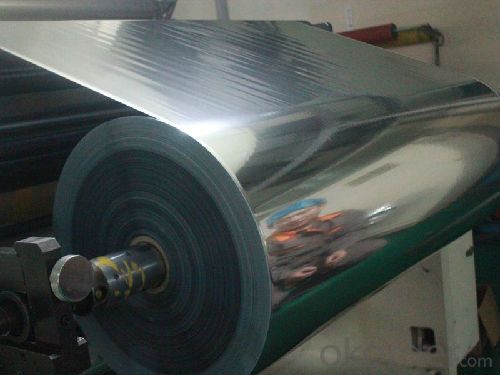
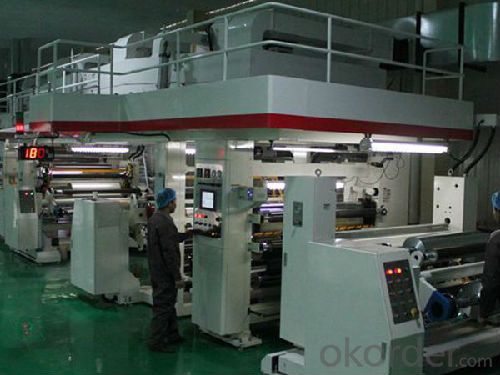
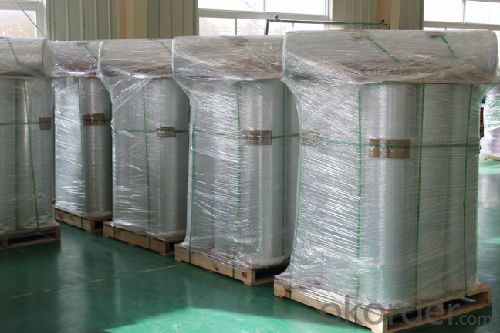
Specification of Aluminum Foil Facing
CONSTRUCTION:
Aluminum foil: Aluminum: 7u / Polyethylene / Polyethylene Woven Fabric
TYPICAL PHYSICAL PROPERTIES:
PROPERTIES | UNIT | VALUE | TEST METHOD | |||||
Basic weight | gsm | 110 | ASTM D646 | |||||
Tensile strength: M. D. X. D. | N/25mm | 400 400 | ASTM C1136 | |||||
Burst strength | N | 140 | ASTM D774 | |||||
Reflectivity of foil surface | % | 95 | ---------- | |||||
Remarks:
1. The data above are typical results and subject to change without notice.
2. Tolerance: Weight and Thickness: ±10%; Width: ±3mm;
Length: Cut Roll & Log Roll ±0.3m, Jumbo Roll ±0.5%.
3. The products should be stored at room temperature and kept from wet and heat source.
4. It is essential, as with all pressure-sensitive tapes, that the surface to which the tape is applied must be clean, dry, and free of grease and oil.
5. The user should take test and do trial-application on the above products before coming into application so as to witness and ensure suitability for user’s special purpose and technique.
FAQ
We have organized several common questions for our clients,may help you sincerely:
1. How about your company?
A world class manufacturer & supplier of Aluminum Foil Facing and is one of the large-scale professional investment Aluminum Foil Facing bases in China. Annually more than 1000 containers of Aluminum Foil Facing are exported to markets in Europe, America and Japan.
2. What is the storage condition?
The Aluminum Foil Facing should be stored at room temperature and kept from wet and heat source.
3. How to guarantee the quality of the products?
We have established the international advanced quality management system,every link from raw material to final product we have strict quality test;We resolutely put an end to unqualified products flowing into the market. At the same time, we will provide necessary follow-up service assurance.
4. How long can we receive the product after purchase?
In the purchase of product within four working days, we will arrange the factory delivery as soon as possible. The specific time of receiving is related to the state and position of customers. Commonly 7 to 10 working days can be served.
- Q: Is it possible to reuse the aluminum foil that was previously used on a surface?
- <p>Reusing aluminum foil facing can be tricky. If the foil is still in good condition without any tears or punctures, and it's clean, you might be able to reuse it for a similar application. However, it's important to note that the adhesive on the back of the foil can weaken over time and with use, which may affect its ability to stick properly. Additionally, if the foil has been exposed to high heat or has been used in a way that compromises its integrity, it's safer and more effective to replace it with new foil to ensure the best performance and avoid any potential hazards.</p>
- Q: Is it possible to use aluminum foil as a surface for cooking pancakes?
- <p>While it's technically possible to cook a pancake on aluminum foil, it's not recommended. Aluminum foil is not designed for direct food contact at high temperatures, as it can potentially transfer aluminum to the food, which may be harmful. Additionally, the foil may not distribute heat evenly, leading to uneven cooking. Instead, use a non-stick pan or a griddle specifically designed for cooking pancakes to ensure even heat distribution and safe food preparation.</p>
- Q: Is it safe and practical to use aluminum foil facing as a substitute for a kitchen cutting board?
- <p>Using aluminum foil facing as a kitchen cutting board is not recommended. While it may seem like a convenient alternative, it can dull your knives quickly and may not be as sanitary as a proper cutting board. Aluminum foil is also not designed to withstand the pressure and friction of cutting, which could lead to tearing or puncturing the foil, potentially causing injury or contamination. It's best to use a cutting board made from materials like wood, plastic, or bamboo, which are specifically designed for food preparation and cutting.</p>
- Q: Is it possible for metal shavings to contaminate food when using aluminum foil with a shiny side?
- <p>There is minimal risk of metal shavings getting into food when using aluminum foil facing. Aluminum foil is designed to be safe for food contact and is generally resistant to shedding particles. However, if the foil is damaged or handled roughly, small particles could potentially come off. To mitigate this risk, ensure the foil is in good condition, avoid tearing it, and handle it carefully to prevent any metal contamination.</p>
- Q: The user is asking if they can use paper plates and plastic utensils as an alternative to aluminum foil for their next meal.
- <p>Yes, you can use paper plates and plastic utensils instead of aluminum foil for your next meal. Paper plates are a great alternative for serving food and can be easily disposed of after use. Plastic utensils are also a convenient option, especially for outdoor meals or when you want to avoid washing dishes. However, it's important to consider the environmental impact of using disposable items. If you're concerned about sustainability, consider reusable options or biodegradable alternatives to minimize waste.</p>
- Q: Is it possible to use aluminum foil facing as a material for creating a potpourri sachet?
- <p>Yes, you can use aluminum foil facing to make a potpourri sachet. Aluminum foil is a versatile material that can be cut into small squares or shapes and filled with dried flowers, herbs, and spices to create a fragrant sachet. Ensure the foil is clean and free from any oils or residues before use. Seal the edges of the foil to prevent the contents from spilling out. While it's not as breathable as fabric, it can still hold the scent and keep the potpourri fresh.</p>
- Q: Is it safe to use recycled aluminum foil as a facing material in cooking?
- <p>No, it is not recommended to use recycled aluminum foil for cooking. Recycled aluminum foil may contain impurities, contaminants, or have been exposed to chemicals that could be harmful when heated. Additionally, the quality and safety of recycled materials are often not as strictly controlled as new materials, which could lead to potential health risks. It's always best to use new, high-quality aluminum foil for cooking to ensure food safety and hygiene.</p>
- Q: This question asks for a comparison between domestic and foreign aluminum foil, specifically focusing on their differences.
- <p>The differences between domestic and foreign aluminum foil facing primarily lie in material quality, manufacturing processes, and market positioning. Domestic aluminum foil often uses locally sourced materials and may have variations in thickness and quality, while foreign foil might employ higher-grade materials for enhanced durability and consistency. Manufacturing processes abroad may incorporate advanced technology, leading to better surface smoothness and uniformity. Additionally, foreign aluminum foil is often marketed as premium, targeting niche segments with specific requirements for quality and performance. Domestic foil, on the other hand, is generally more affordable and caters to a broader market, including everyday household use.</p>
- Q: What are the particular criteria or considerations when choosing aluminum foil facing materials?
- <p>When selecting aluminum foil facing, specific requirements include the foil's thickness, which affects durability and insulation properties; surface finish, which can impact heat reflection and aesthetics; and the type of adhesive used for bonding, which should be resistant to heat and moisture. Additionally, the foil should have good barrier properties to prevent moisture and air infiltration, and it should be compatible with the substrate materials to ensure a strong bond. Compliance with safety and environmental standards is also crucial.</p>
- Q: Is it possible to use aluminum foil with a reflective side for baking bread?
- <p>Yes, aluminum foil facing can be used for baking bread, but with some considerations. The reflective side of aluminum foil can help retain heat and moisture, which is beneficial for bread baking. However, it's important to avoid direct contact between the foil and the bread to prevent sticking. You can use the foil to line the baking sheet or create a tent over the bread to trap steam, which contributes to a better crust and texture. Always monitor the bread closely when using foil to prevent over-browning or burning.</p>
Send your message to us
Aluminum Foil Facing Single Sided Woven Foil
- Loading Port:
- China Main Port
- Payment Terms:
- TT or LC
- Min Order Qty:
- 5000 m²
- Supply Capability:
- 800000 m²/month
OKorder Service Pledge
OKorder Financial Service
Similar products
Hot products
Hot Searches
Related keywords
